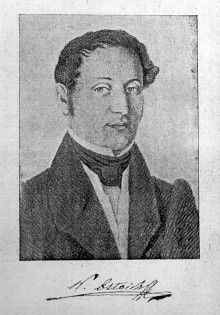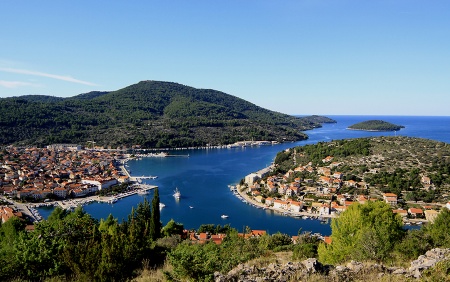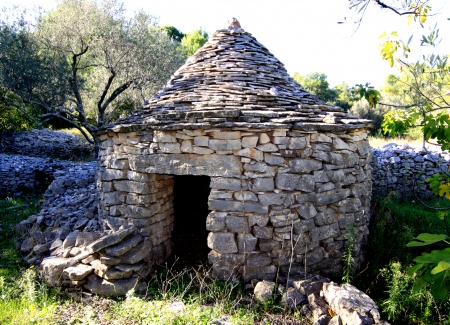Difference between revisions of "Directory:Zuvela"
(link repair) |
m (→See also: added) |
||
| Line 95: | Line 95: | ||
* [[Korcula Dialect|Korcula dialect]] | * [[Korcula Dialect|Korcula dialect]] | ||
* [[Directory:Historical Compendium of the Island of Korcula| Korcula History-Historical Compendium of the Island of Korcula]] | * [[Directory:Historical Compendium of the Island of Korcula| Korcula History-Historical Compendium of the Island of Korcula]] | ||
| + | * [[Directory:Korcula History 2 |Korcula History 2]] | ||
==References== | ==References== | ||
Revision as of 00:36, 8 March 2011
The Zuvela surname has strong roots originating from the western end of the island of Korcula [1] in Croatia. In the Croatian language the Z in Zuvela is actually Ž. [2] Its original spelling was Xuvella. Another variation on the surname is Zuvella.
The Zuvela’s arrived on the west end of Korčula in the early 1600’s and settled in a small field called Rasohatica. There are still small remnants of stone huts there to this day. First time the surname Xuvella was mention was in Blato (Blatta) in a document dated 2nd of February in 1642.[3] At the time, Korčula was part of the Republic of Venice (within the Dalmatian province).[4] From where the original Zuvelas migrated is still a mystery to this editor. The Republic of Venice did accept refugees and migrants within her boundaries during her long history. They came from all parts of Europe. Many of them were from Spain [5] as well as Christians from the Ottoman Empire (which ruled the Balkans for centuries).[6]
The Zuvelas abandoned Rasohatica and moved to the village of Blato. From there members of the Zuvela family moved to (and helped to establish) the town of Vela Luka. In more modern times they have migrated to Australia as well as the United States and other parts of the world.
The information concerning the early Zuvelas of Korčula is taken from a local 19th century historian from Blato called Nikola Ostojic:
| “ | 36. Xuvella. Of these people I don’t have any history except for their primitive residence that was in Rasohatica from where they moved to Blato (Velikom Učijaku). Afterwards from the 1700s they built large houses and floors/attics/lofts which now remain largely empty because of their move to Vela Luka [7] | ” |
He wrote a book about the town of Vela Luka in 1853. The book was published in 1953. It was originally written in Italian with a Venetian dialect. Italian was the official language of the Dalmatian province[8] at the time and had been so for centuries.
In the 1860s Croatian (then referred to as Illirski) [9] was introduced by the Austrian authorities as a second language. It then slowly replaced Italian altogether. Thus the name Xuvella became Žuvela.

Historiclly the mother tongue of the majority of the population of the island of Korčula (in particularly the west end) is Croatian. The Korčula dialect [10] of local Croatian language acquired many influences over the centuries, such as the now extinct Romance language Dalmatian,[11] Venetian and others.
Vela Luka Primary School
Taken from Vela Luka Primary School records:
- School year 1862./63.; III. r. (grade) Xuvella Giacobbo di Francesco [12]
Images
See also
References
- ^ In Croatian the c in Korcula is pronounced ch and is written "č".
- ^ The ž is is pronounced zh.
- ^ Vela Luka od 1490 do 1834 by Zvonko Maričić (p168)
- ^ John Everett-Healu. "Dalmatia." Concise Dictionary of World Place-Names. Oxford University Press. 2005. Encyclopedia.com
- ^ Dalmatia and Montenegro: With a Journey to Mostar in Herzegovina -Volume 1 by John Gardner Wilkinson (p116).
- ^ The Land of 1000 Islands by Igor Rudan
- "However, the clashes between the Ottoman Empire and Venetian Republic produced extensive migrations from the mainland areas, especially from today's Bosnia and Herzegovina, to the eastern parts of the islands of Brac, Hvar, Korcula, and Pag."
- ^ Vela Luka-Historijsko Topografski Prikaz by Nikola Ostojić
- ^ Osnovna Škola "Vela Luka" Vela Luka Zbornik-150 Godina Školstva u Velaoj Luci (p8)
- ^ Illyricum was a province of the Roman Empire. It was named after one of the indigenous peoples in that region.
- ^ The local dialect is sometimes referred to as Naski or more correctly Naški. The š is pronounced sh.
- Sir John Gardner Wilkinson (an 19 century English historian. October 5, 1797 – October 29, 1875) was an English traveller, writer and pioneer Egyptologist of the 19th century. He is often referred to as "the Father of British Egyptology".
- He referred to the Dalmatian Slavic dialect as Illirskee. Cited from Dalmatia and Montenegro: With a Journey to Mostar in Herzegovina by Sir John Gardner Wilkinson. (p33)
- ^ Collegium Antropologicum, Volumes 15-16 by Croatian Anthropological Society-1991. (p311)
- ^ Osnovna Škola "Vela Luka" Vela Luka Zbornik-150 Godina Školstva u Velaoj Luci (p50)
- The Early Beginnings of Formal Education - Vela Luka (beginnings of literacy and Lower Primary School 1857 – 1870):
Gallery-Zuvela Crosses & FX signature
From left to right. (click to enlarge)
- Zuvela cross near Rasohatica (next to Krusevo). Built in 1818.
- Zuvela cross (Brbe) at Vincidur. Built in 1761.
- FX signature from 1837. X is for Xuvella.
External links

<sharethis />






